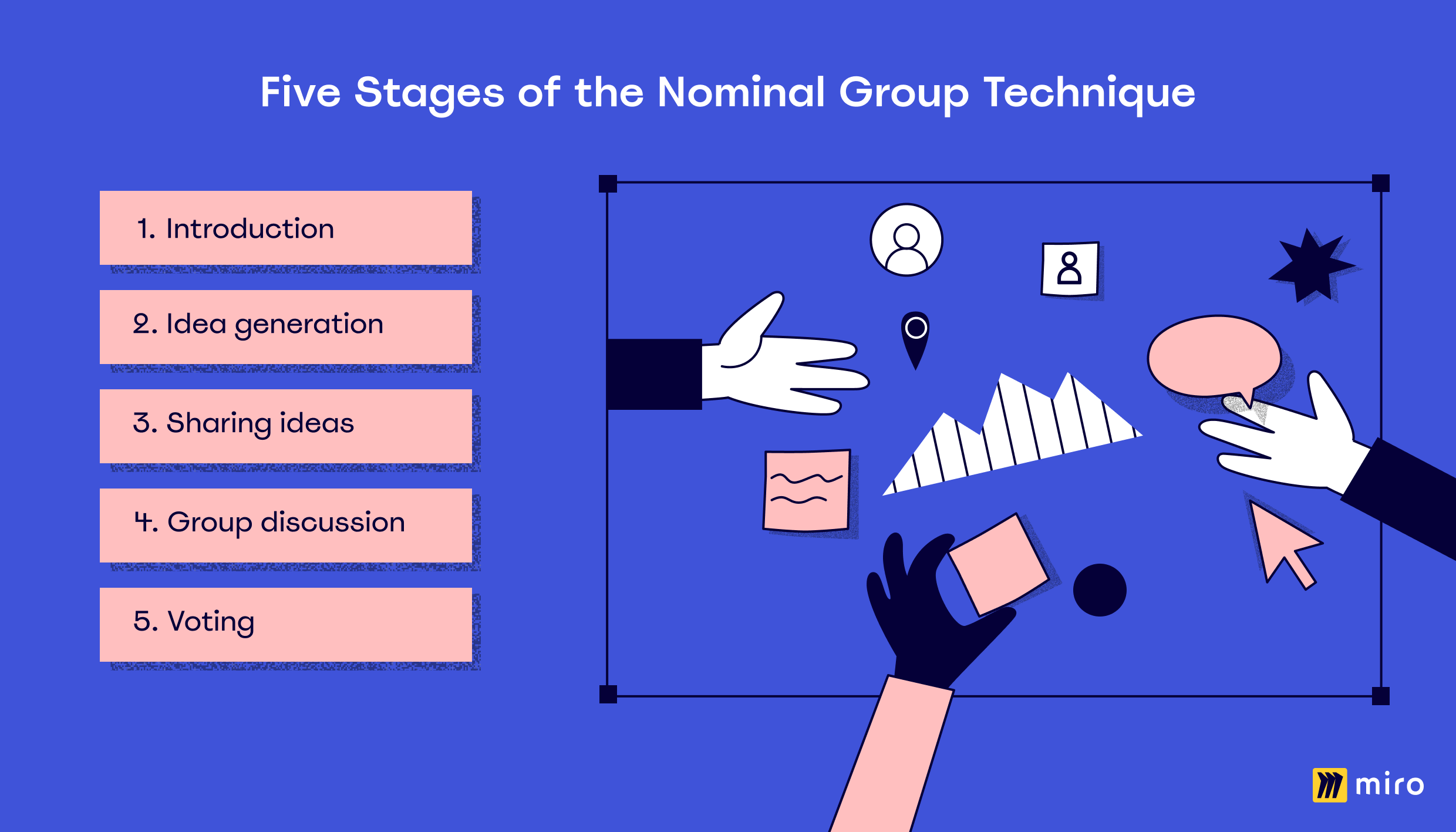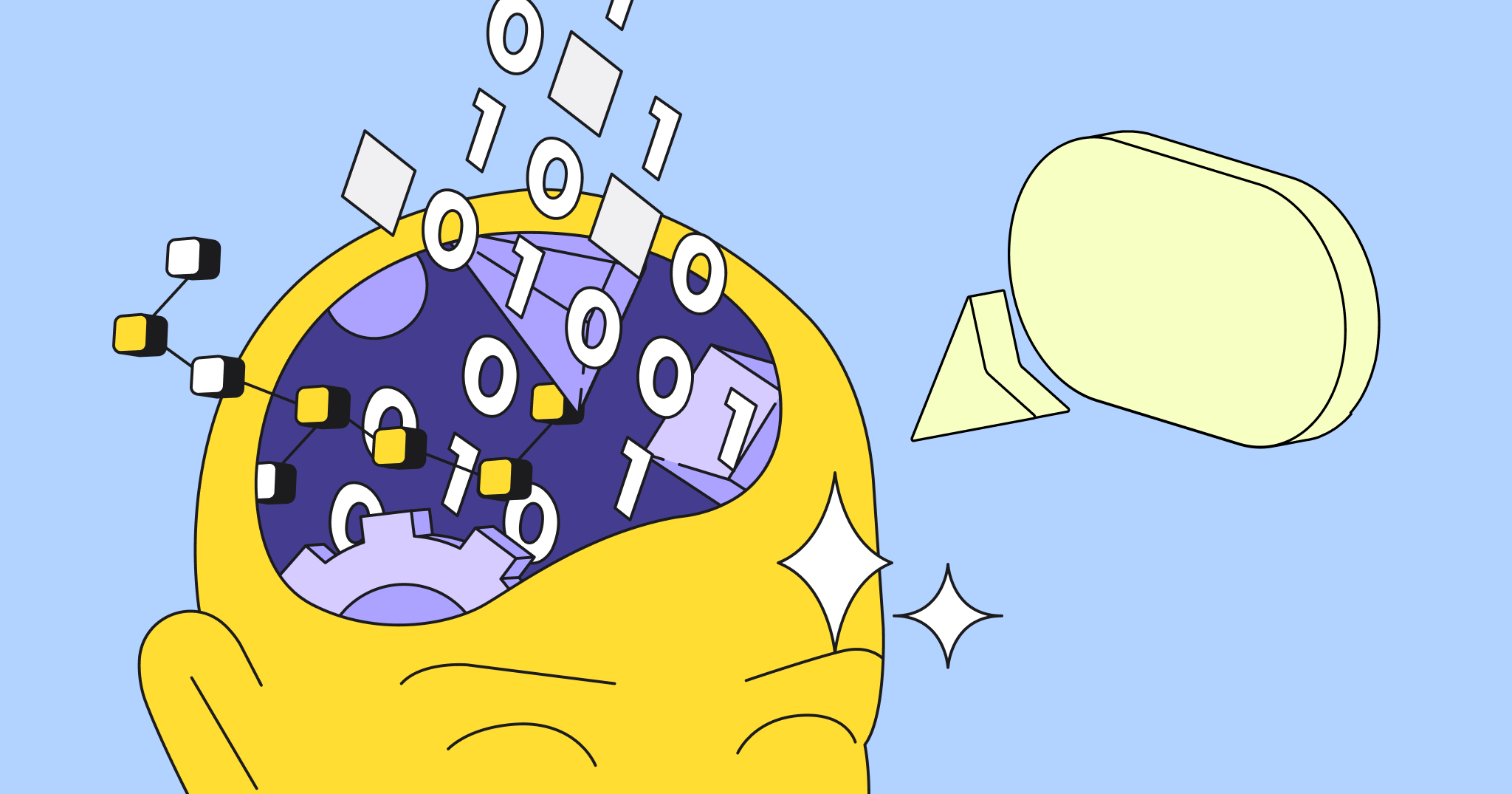When trying to reach a group consensus on your team, you might struggle to take everyone’s opinions into account. Some people might even miss the opportunity to share their opinions at all if they’re overshadowed by outspoken members of the group.
Fortunately, there is a way to make this process easier to manage and more efficient: the nominal group technique.
If you’re looking for a way to help your team with the decision-making process, the nominal group technique could be exactly what you need. It helps teams make fast and informed decisions, taking everyone’s opinion into account.
In this article, we’ll take a look at what the nominal group technique is and how it can help you create informed and fast decisions.
What is the nominal group technique?
The nominal group technique (NGT) helps teams identify problems and create solutions as a group. It streamlines the decision-making process and identifies solutions as quickly and efficiently as possible.
Although the technique is similar to brainstorming, it’s not the same thing. Unlike a brainstorming session, the NGT has a key focus on making sure every group member contributes to the solution. As a result, you have a well-informed solution that takes everyone’s perspective into account.
The structure of the NGT typically has five stages:

Here’s how it works:
- Introduction: The group facilitator explains the purpose of the meeting and the items for discussion.
- Idea generation: Sometimes known as ‘silent generation,’ group members formulate their ideas alone before the group idea discussion.
- Sharing ideas: Every member of the group gives their view of the solution and a short explanation.
- Group discussion: This stage involves a back-and-forth debate about items that have been shared. Project team members discuss their perspectives and ideas in relation to the problem.
- Voting: Duplicate solutions are now eliminated from the list before the ranking process begins. Members in the group rank the solutions 1st, 2nd, 3rd, etc.
There are some variations of this process. For example, the solutions don’t always have to be ranked but could be evaluated more subjectively. The right option depends on the group you’re working with and the reason behind why you’re using the technique in the first place.
Ultimately, it’s up to the group facilitator to identify the best way to manage the process.
What are the benefits of using the nominal group technique?
On top of speeding up the decision-making process, are there any other benefits of using the NGT?
In short, yes.
Let’s take a look at what they are.
Encourage naturally shy team members to speak up
For some people, speaking on the spot in front of a group of people can be daunting. They might even struggle to fully formulate ideas if they feel under pressure. Instead of voicing their opinion, they keep it to themselves.
Unfortunately for you, this means you might miss out on a potentially great idea.
This is where the nominal group technique can be helpful.
Everyone has a chance to speak their mind without worrying about being put on the spot. They have time to develop detailed and thoughtful responses, and there’s no pressure to respond immediately (which some team members will be grateful for).
There might be some people who want to speak more than others, but everyone will have a chance to think about a solution and present their perspective in a comfortable environment.
Consider different perspectives
Everyone approaches problems from a different standpoint. Even if ideas are similar, there are often small differences in the ways people approach a problem.
Because the nominal group technique requires equal participation from all team members, you can incorporate all the different perspectives into your solution. With a variety of ideas in the melting pot, you’ve got a better chance of creating the best possible solution.
Taking everyone’s ideas into account also shows team members that their opinions and voices are valid. Everyone has a chance to have their say and work as a group to decide on the best course of action.
Increase productivity in other areas of the business
We already know that the NGT is an efficient way to make fast, informed decisions. Everything happens in one location in a short space of time.
Now we want you to think about the effect this has on the rest of the business.
Making one process more efficient frees up time for team members to focus on other tasks.
Let’s say that by using the nominal group technique, each team member saves themselves three hours that day. Those three hours can then be put to use elsewhere, allowing them to maximize their time and be more productive in other areas.
By using the NGT and streamlining the decision-making process, you’re also helping the business grow and develop quicker. It’s a win-win.
Are there any disadvantages of the nominal group technique?
Although there are clear advantages of using the NGT, there are some downsides to be aware of. Let’s take a look at what they are.
Only able to address one problem at a time
Because of the NGT structure, you can only address individual issues before moving on to the next. It’s pretty rigid in its format, and there’s no room for spontaneity in the process.
So if you need something with a little more flexibility, this might not be the right option.
But despite the lack of flexibility to discuss multiple problems at once, you are likely to get through individual problems faster with the NGT framework. Even if you have multiple issues to solve, chances are you’d power through them faster with the NGT in comparison with a typical brainstorming session.
Requires all members to be available at the same time
To conduct an NGT session, everyone in the group must be available at the same time. But we know that finding a time when everyone is available is easier said than done — especially if you’re working in a remote team or across different time zones.
If you can’t round up your team to discuss the issues at the same time, you won’t be able to use the NGT.
An NGT session doesn’t necessarily need to be in person, though. With the use of online collaborative tools, you can still run the session virtually.

This means you don’t have to worry about roping everyone into the office to run the session. So long as everyone working remotely is available at the same time, you can do it online with a video chat.
Time-consuming for group leaders and team members
Although NGT sessions are an efficient way to make fast decisions, they can take up a lot of time.
Think about it. Instead of spreading the discussion across multiple timeframes, you discuss everything in one go. Sure, it’s a fast way to overcome problem-solving in the long run. But it takes large chunks of time out of the working day — particularly if you’re running multiple sessions back-to-back.
Not to mention the amount of time required beforehand for the group leader to prepare the session. The entire process must be carefully planned to make sure everything runs smoothly and that you get to a solution as efficiently as possible.
If your team members don’t have large chunks of time available, the NGT might not be the most effective method to make a fast decision.
When should you use the nominal group technique?
Typically speaking, there are three main consensus methods:
- Nominal group technique
- Consensus development panels
- Delphi technique
So how do you know if and when the nominal group technique is right for your project team?
Let’s take a look.
Certain group members are more vocal than others
If you have a few team members that are particularly outspoken and vocal in group settings, the NGT can be helpful.
Why?
Because it encourages every team member to take part and voice their opinion.
With the NGT, you create a level playing field. You won’t have a few members dominating the discussion because everyone has a chance to say their part. Everyone in the group should feel more open to contributing because they’ll have the time to talk through their ideas.
Simply put, it prevents dominant members from taking the floor for too long and provides space for all participants to have their say.
Some group members need time to think things through
As we’ve already mentioned, some employees don’t perform well on the spot. They prefer to think before providing an answer.
Fortunately for these employees, the nominal group technique allows them to think things through.
During the generation of ideas phase, team members have a chance to think and reflect on their ideas before presenting them to the group. It takes away the pressure of responding on the spot, helping employees feel more confident in their communication.
So if you have some employees that prefer to think things through before making suggestions, use the NGT. It creates a comfortable and inclusive environment for sharing ideas without the pressure of sharing ideas on the spot.
The team is struggling to find a solution on their own
If your team has been working on a problem for a while and they’re not coming to a solution on their own, it might be time to use the nominal group technique.
Let’s say there’s been an issue with one of your internal processes. It’s been an issue for some time, and it’s causing problems in the efficiency of your workflow. Different employees have suggested possible solutions, but nothing has hit the mark.
Enter: the nominal group technique.
By using the NGT, your team works together to create a viable solution for your long-standing problem.
Instead of suggesting solutions separately, the NGT brings everyone together to collaborate and focus on the best solution for the problem. As they say, two (or more) heads are better than one.
There’s a new member in the team
It’s always a little nerve-wracking being a new employee. You’re trying to impress your team, make a good impression, and do your job well.
The day comes when you’re asked to join your first team meeting. You’re a little apprehensive and not 100% sure what to expect. Before you know it, you’re being asked to share your ideas on the spot with your new team.
It sounds pretty overwhelming, right?
That’s because it is.
If you have a new employee join your team, you might want to think about ways to relieve some pressure. Focus on creating an inclusive and collaborative environment for them to be a part of so they’ll be confident sharing their ideas with the team.
The nominal group technique is a great way to do exactly that.
Yes, they’ll still have to contribute in the team setting, but they’ll have time to think their ideas through before sharing. It allows them to discuss their opinions in a safe space and work with their team to create a solution, making them feel more comfortable in a new setting.
Using a collaborative platform to facilitate the nominal group technique
When it comes to hosting a nominal group technique session, you might want to consider using a collaborative platform like Miro.
With the right software, you can host your NGT session virtually, discuss ideas, and make notes throughout the entire process. Think of it like a virtual flip chart that you can customize to your heart’s content.
And when everything’s wrapped up, you can share the information with relevant parties — including external stakeholders.
Let’s take a look at how a collaborative platform can help you facilitate an NGT session in more detail.
Prepare your session in advance
Preparing NGT sessions can be a pretty time-consuming process. But with the right platform, it’s much easier to get everything up to scratch before the session takes place.
Take a look at Miro as an example. With our intuitive whiteboard, you can use an existing template, customize the layout, and upload files to create a plan that’s perfect for your needs.

And once you’ve created a template that works well, you can save it to use again in the future.
Record the outcome in an accessible location
With a collaborative platform, group members can see the NGT notes in real-time. When the session is over, you can also share the information with your team so that they can reflect on what happened. Everyone will have access to the outcome when the session is done.
This is particularly helpful if you’re working as part of a distributed team. It’s easy for remote workers to access the information when they need it.
Share the information with stakeholders
In addition to sharing internally, an online platform also allows you to share information with key stakeholders.
With Miro, for example, teams can invite external visitors to view and edit their online whiteboards. You can choose their level of access (view, comment, or edit access) based on your subscription plan.
The visitor doesn’t need an account with Miro to access and edit the board. They simply join via the link you’ve created, and it’s like they’re part of the team.
Start planning for an NGT session today
By now, you’ve got a pretty good understanding of what the nominal group technique is and how to use it.
Are you thinking about using the nominal group technique in your business? Sign up to Miro to start planning and preparing for the session.
And when everything’s wrapped up, you can store all the information in one of our intuitive and visual online whiteboards. Everyone involved in the project will have access, and you can share it externally with any key stakeholders.





